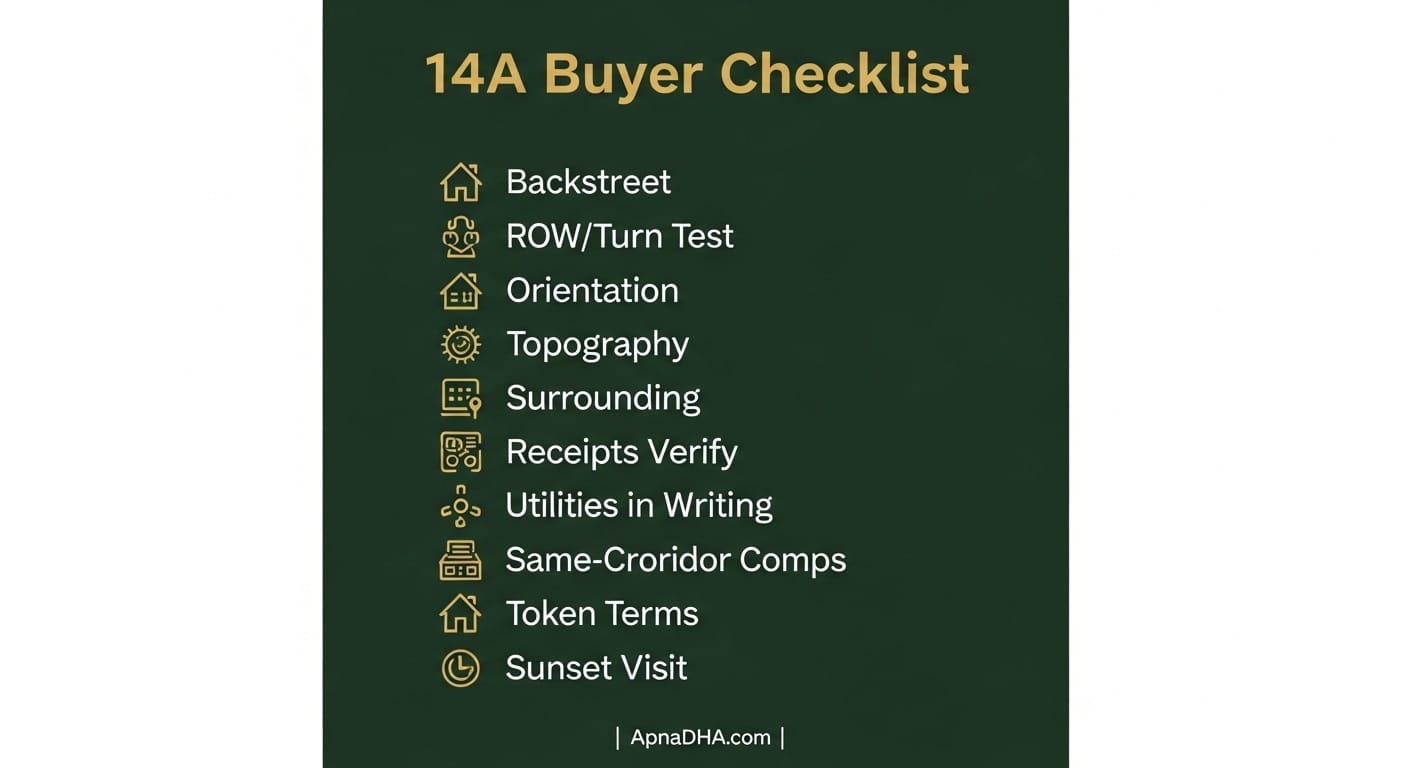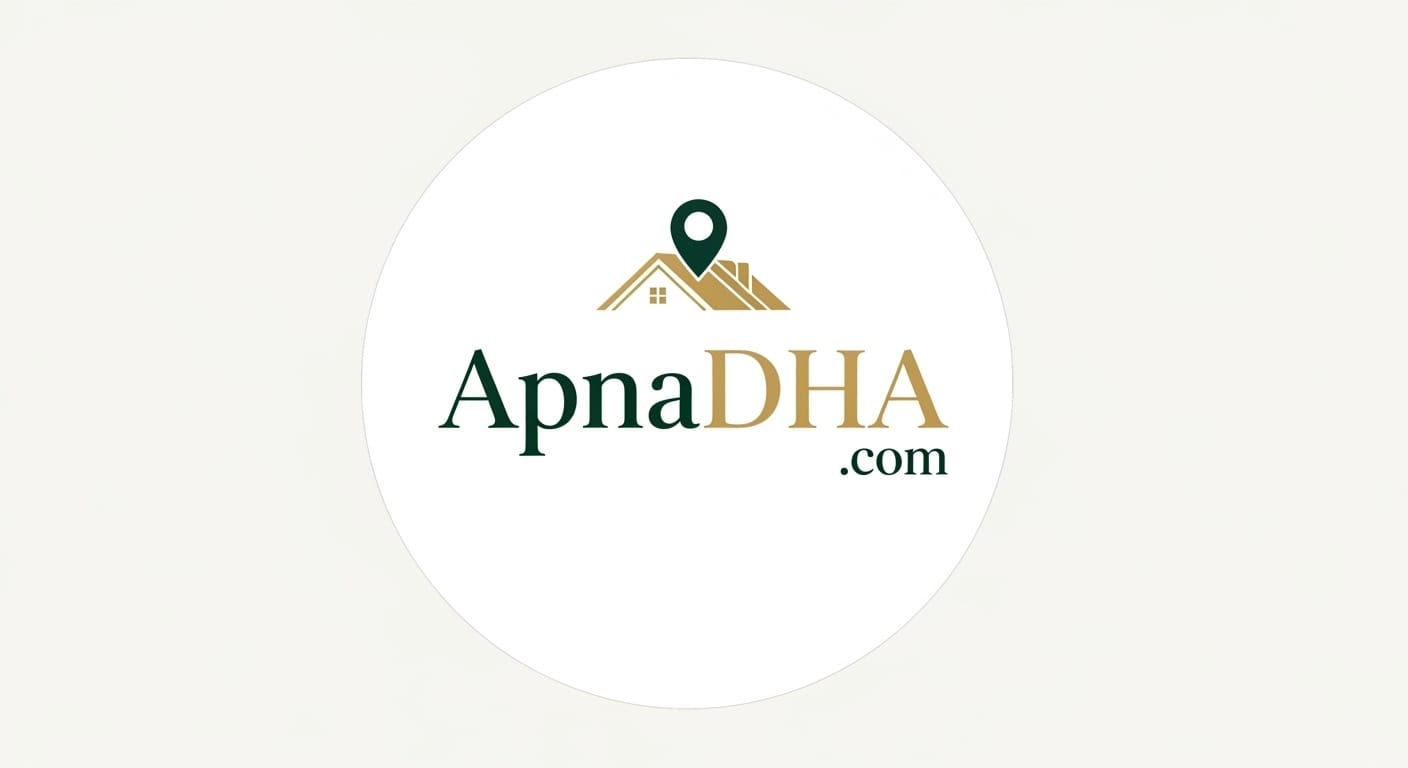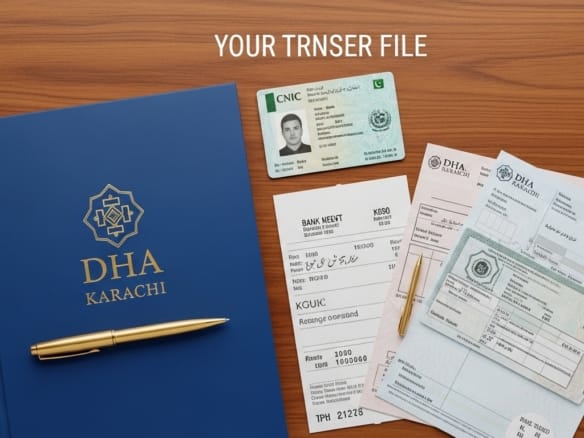If you’re targeting entry-size plots with real end-user demand, DHA City Karachi Sector 14A should be on page one of your shortlist. The vibe here is “practical, family-first”—recurring 125 yards opportunities (plus 200 yards in select pockets), straightforward access when routed smartly, and a community feel that improves as more homes finish. The key is to stay street-specific: pick quiet-but-accessible backstreets, verify utilities/possession in writing, and price from same-corridor comps (last 60–90 days)—not sector averages.
Want today’s 5 best 14A options (papers checked)? WhatsApp 0300-8277717 (tap:
wa.me/923008277717). Short videos, receipts notes, and same-corridor comps included.
Why Sector DHA City Karachi Sector 14A (and who it suits)
- First-home families stepping out of apartments into 125–200 yds.
- Investors who prefer liquid, starter-budget inventory with broad buyer pools.
- Parents building for kids (future marriage/studies) wanting manageable budget + timeline.
What to expect
A growing neighborhood feel, practical routes from the main corridor, and micro-pockets that vary by street in ROW, lighting, paving and cleanliness. Your win comes from street selection and documents discipline—not aggressive risk-taking.
Access & movement (tour plan that saves time)
- Cluster visits: Pick 2–3 adjacent streets per session—avoid zig-zagging.
- Two passes: Mid-day (heat/traffic reality) and sunset (breeze, glare, parking pressure at parks/masjid).
- Backstreet bias: One–two turns off the main corridor = access without daily noise.
- Log it: For each street, note turning radius, ROW comfort, lighting, cleanliness, under-construction load.

Street-Selection Method (14A edition)
1) Backstreet > Avenue
Avenues look “grand” but can bring noise, glare, faster traffic. In 14A, the best family streets are usually one–two turns off the main, where cars slow and evenings feel calmer.
2) ROW & turning geometry
Do the SUV three-point-turn test. Note:
- Gate: swing vs sliding feasibility (sliding often wins on tight ROW).
- Porch depth: one SUV comfortably? SUV + compact on 200 yds?
- Corners & cul-de-sacs: helpful turning radii or awkward bottlenecks?
3) Orientation (price inside the same street)
- West-open: better breeze—control heat with shading, glazing and trees.
- Corner: extra light/parking—watch for cut-through behavior.
- Park-facing: lifestyle/resale appeal—verify evening parking pressure and headlight glare before paying a premium.
4) Topography & drainage
Stand at the lowest corner after a wash/rain; trace water path. If the plot needs fill/compaction, quantify and price it in. Slight slope away from the porch is a daily comfort win.
5) Surroundings & “pocket finish”
Paving continuity, signage, working streetlights, cleanliness, vigilance presence—tiny cues that influence daily happiness and resale impressions within seconds.
6) Utilities & possession (in writing)
Verbal “soon” isn’t a milestone. Ask for dated letters/emails that state what’s live and what’s scheduled. Photograph and file everything.
Plot sizes that shine in 14A
125 yards (entry sweet spot)
Why it works: biggest buyer pool, manageable CAPEX, faster build+finish timeline, strong liquidity when papers/utilities are clear.
Space plan tips:
- Ground: porch (1 car), drawing/powder up front, open kitchen + family lounge, one ground-floor bedroom, tucked service yard.
- First: 2–3 beds (one can flex as a study), compact shared bath stack, screened terrace for evening use.
- Climate: deep overhangs, cross-vent windows, trees on sun-hit edges.
- Future-proof: conduits for solar/inverter and EV; keep shafts aligned for a future compact lift.
200 yards (family move-up)
Why it works: more frontage and turning comfort, genuine study/home office potential, better privacy zoning.
Space plan tips:
- Ground: formal drawing/dining near entry, powder, family lounge + open kitchen (option for mini scullery), guest/parents’ room.
- First: 3 bedrooms + study nook, linen/box storage, terrace with pergola/screen.
- Basement: case-by-case only after soil/water-table checks; if not, use a media/den on first floor.
Pricing discipline (how to avoid overpaying)
- Same-corridor comps (60–90 days)
Price from 3–5 recent trades on the exact corridor (or closest parallel), then adjust for park/corner/west-open and quirks (cul-de-sac mouth, transformer, leveling). - Ready vs developing pockets
Ready pockets command higher ask but reduce holding risk/uncertainty. Developing pockets must compensate you for time risk—model your carry. - Full-paid vs dues-remaining
Compute the true total: remaining dues + any penalties + your cost of capital + admin visits. A “cheap” ask can become expensive if carry eats the saving. - Evening check = price reality
If park-edge parking pressure and glare are high after Maghrib, either price it down or move to a quieter backstreet.
Negotiation levers that work in 14A
- Fill/compaction requirement (get a contractor quote to justify your offer).
- ROW/turning limitations (sliding gate cost? curb-cut tweak?).
- Under-construction load (months of dust/noise ahead → discount).
- Receipts/acknowledgements clarity (anything unclear in verification = pause or reprice).
- Written utilities/possession (missing letters = uncertainty premium).
Installments & payment hygiene (quick rules)
- Prefer published/recognized schedules where available; keep all payments on official rails so acknowledgements appear in verification.
- If you want to build soon, a full-paid or clean dues-remaining plot in a ready pocket is typically simpler (and often cheaper overall).
- Private installment pitches: normalize against a recognized table (down payment %, cadence, total) and only proceed with watertight documentation.
Build-Now vs Hold-Then-Build
- Build-now: choose ready/nearly ready pockets; lock comfort and get ahead of price steps via finished home value.
- Hold-then-build: choose developing pockets only at a real discount; document utilities/possession timelines and carry assumptions.
Sector 14A Buyer Checklist (print this)
- Backstreet pick: one–two turns off main; avoid daily glare/noise.
- ROW & turning: SUV three-point-turn; gate swing vs sliding; porch depth notes.
- Orientation pricing: west-open (breeze), corner (light/parking), park-facing (lifestyle)—price inside the same street only.
- Topography: lowest-corner water path; list fill/compaction/retaining need.
- Surroundings finish: paving continuity, signage, lighting, cleanliness, vigilance.
- Under-construction load: dust/noise horizon (months?).
- Paper chain: allotment/transfer history + seller CNIC copies.
- Receipts & dues: verify payments/acknowledgements on the official portal before token (screenshots ≠ documents).
- Utilities & possession: insist on written status/timelines (letters/emails).
- Comps discipline: 3–5 same-corridor trades (60–90 days).
- Token terms: refund triggers, cheque numbers, transfer window, who pays which fees—all in writing.
- Second visit: sunset walk for wind, parking behavior, and headlight glare.
Common mistakes (and how to avoid them)
- Pricing from sector averages instead of same-corridor trades.
- Paying a park-facing premium without checking evening parking pressure and glare.
- Choosing avenue-front for “prestige”—and living with noise/egress pain.
- Tokening on WhatsApp screenshots—verify on portal first.
- Under-budgeting MEP & climate to overspend on façade.
- Skipping fill/compaction math—water finds the lowest boundary.
- Forgetting porch/gate geometry—daily usability starts at the curb.
- Ignoring under-construction load—dust/noise can derail your timeline and rental plan.
- No written utilities/possession letters.
- Single visit only—sunset reality flips decisions.
FAQs
Q1. Is Sector 14A better for end-use or investment?
Both, with a tilt to end-use at 125–200 yds. Investors like 125 liquidity when papers/utilities are clean.
Q2. Park-facing vs corner vs west-open—what’s smarter here?
Depends on your street and lifestyle. Price any premium inside the same street after a sunset check for parking/glare.
Q3. Should I go for installments or full-paid?
If you plan to build soon, full-paid/clean dues-remaining in a ready pocket is simpler. If you need structured payments, use a recognized schedule and keep every rupee on official rails.
Q4. Basement on 125/200 yds?
Usually skip unless soil/water-table data says yes. You can get similar value with a media/den or a clever sunken lounge.
Q5. How do I avoid overpaying?
Use 3–5 same-corridor comps (60–90 days) and adjust for orientation/leveling/adjacency. If evening reality is noisy/glary, either discount or move streets.
Internal Links (SEO & conversion)
- Sectors Hub: /dha-city/sectors
- Neighbor sectors: /dha-city/sector-6 • /dha-city/sector-11e • /dha-city/sector-13a
- Sizes referenced: /dha-city/plots-125-yards • /dha-city/plots-200-yards
- Market & paperwork: /dha-city/prices-latest • /dha-city/payment-plans • /dha-city/transfer-fee-process






Join The Discussion